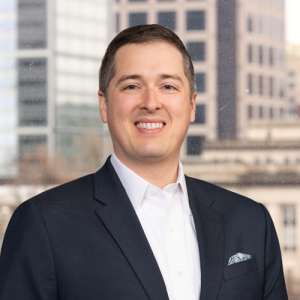The Eighth Circuit affirmed that a Missouri regulatory commission’s publication of hearing testimony was “news media” sufficient to trigger the False Claims Act’s public disclosure bar.
The False Claims Act includes a provision that bars FCA actions by qui tam relators if the subject matter of the action has been sufficiently disclosed by a federal report, hearing, audit or investigation or if it has otherwise been disclosed by “news media.” 31 U.S.C. § 3730(e)(4)(A). The exception to this bar is if the relator is the original source of the information otherwise publicly disclosed. Id.
The Decision
In United States ex rel. Kraxberger v. Kansas City Power and Light Company, the Relator proceeded without government intervention in a case alleging that the Defendant fraudulently induced the General Services Administration to install a heating and cooling system in a federal building based in part upon misrepresented future rates of increase in the cost of electricity rates. Additionally, the Relator alleged that the Defendant engaged in fraudulent activity by providing gifts in the form of sports and entertainment tickets, gift cards and other expenses paid on a business trip.
The Eighth Circuit affirmed that two disclosures barred the Relator’s claims related to the rate increases: (1) a letter disclosed in a prior FOIA request to the GSA; and (2) testimony before Missouri’s Public Service Commission, which regulates the electricity rates in Missouri.
A 2006 letter was disclosed in a FOIA request and written by the previous provider of electricity to the federal building: Trigen-Kansas City Energy Corporation. The letter “warned GSA that any discount [the Defendant] offered was subject to regulation.” (Kraxberger at 2.) Further, during 2008, the Defendant testified at a Public Service Commission hearing regarding the rate increases and noted that the GSA had relied upon its representations that it would receive a lower rate that was no longer possible due to the Commission’s actions that caused that rate to raise.
The Eighth Circuit upheld the lower court’s determinations that the letter and testimony were all public disclosures, barring the Relator’s claim. The Court recognized that the Trigen letter and FOIA response provided by GSA were a federal report, triggering the public disclosure bar. Additionally, the Eighth Circuit, noting that “news media” is statutorily undefined, adopted the Supreme Court’s recognition that “the term has a ‘broad sweep.'” (Kraxberger at 4.) In doing so, it then ruled that publication of 2006 and 2008 testimony regarding the rate changes by the Missouri Public Service Commission on its website qualified as a disclosure by news media under the statute and triggered the public disclosure bar.
The Court affirmed the dismissal of the false-rate claims and the grant of summary judgment for the Defendant on the remaining claims.
The Impact
The Eighth Circuit’s broad definition of “news media” is important in light of the False Claims Act’s most recent amendments. The public disclosure bar was amended in 2010, narrowing the government reports, investigations, audits and hearings to just federal entities. However, this ruling highlights the opportunity that remains for FCA defendants and their counsel to persuasively and successfully argue for the application of the public disclosure bar through the second portion of the statute’s language: news media. Here, even though the testimony took place before a state regulatory commission, the Court’s broad definition of “news media” sufficiently brought the testimony within the public disclosure bar to defeat the Relator’s claim.
Should you have any questions regarding False Claims Act defense or this article, please contact:
- David B. Honig at dhonig@wp.hallrender.com or (317) 429-1447;
- Drew B. Howk at ahowk@wp.hallrender.com or (317) 429-3607; or
- Your regular Hall Render attorney.

